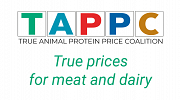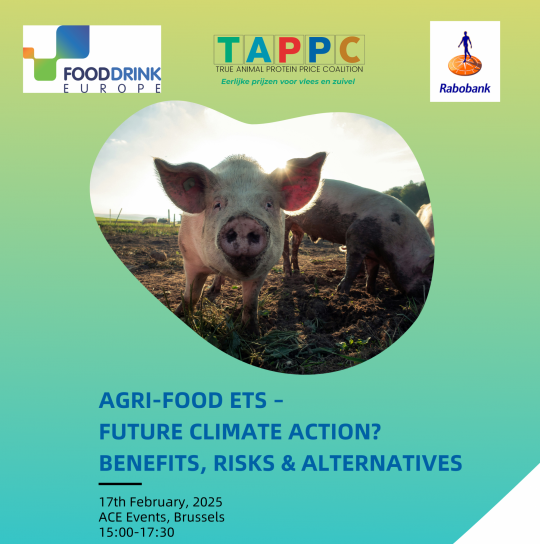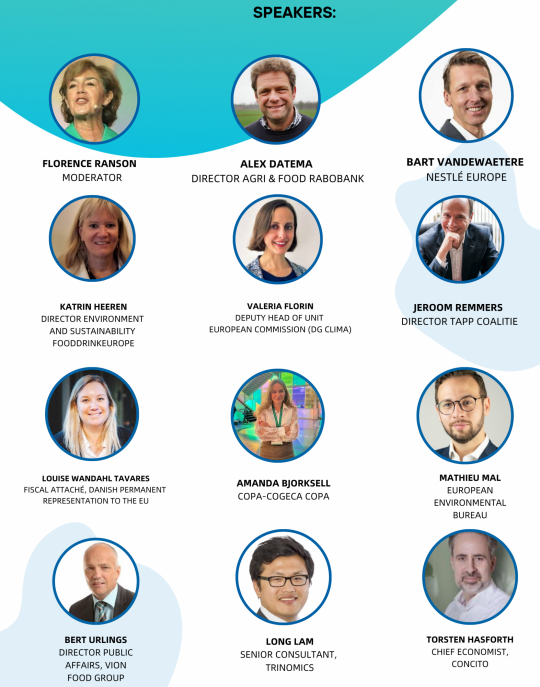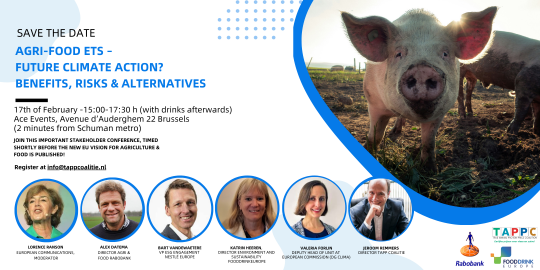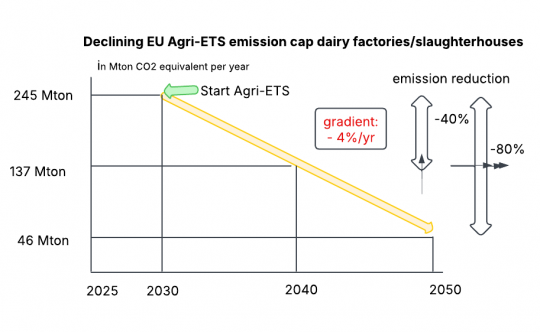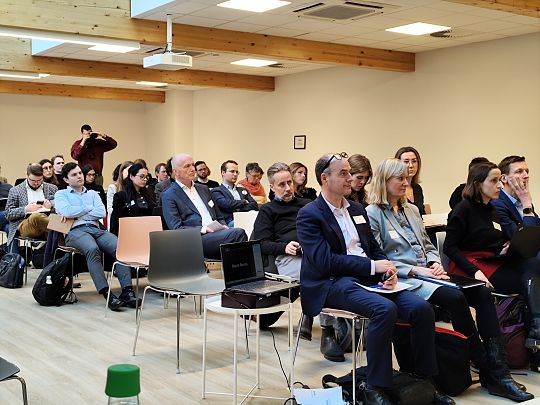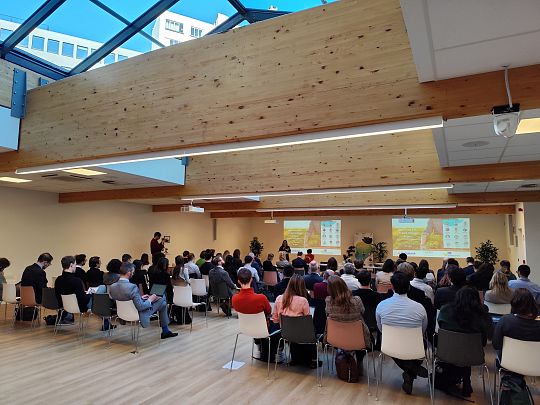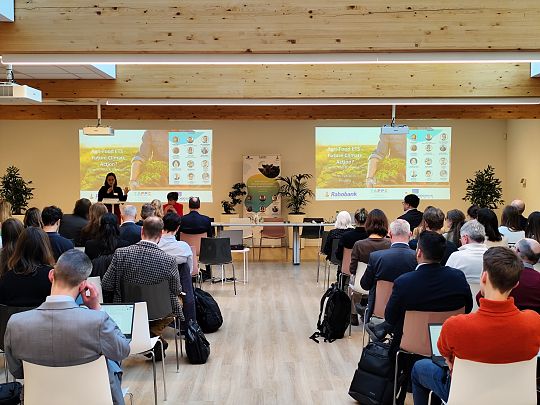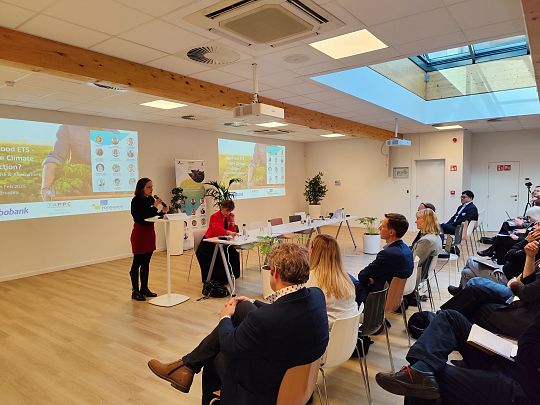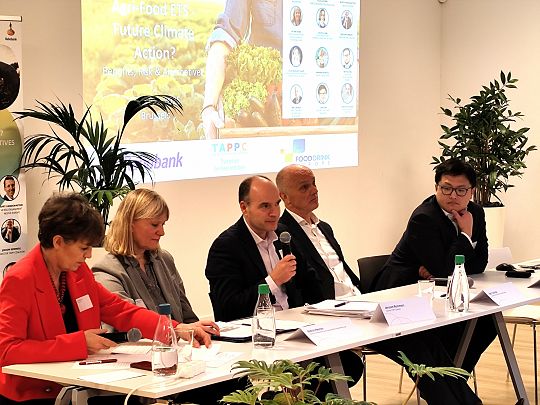Agri-Food ETS Conference Brussels - Future Climate Action? Benefits, Risks & Alternatives
17th February, the conference Agri-Food ETS - Future Climate Action? Benefits, Risk & Alternatives was organised by TAPP Coalition, Rabobank and FoodDrinkEurope in Brussels. It is a public dialogue on benefits & risks of a potential Agri-ETS, for the food & drink sector, meat & dairy production, and in view of a CBAM import tax. Eleven speakers and 80 persons in the audience and more online, explored possible impacts of an Agri-ETS, to find possible solutions and benefits for the sector. The Agri-ETS policy tool was also mentioned in the Strategic Dialogue on the Future of Agriculture. Chair was Florence Ranson (Former Director Communication & Public Affairs FoodDrinkEurope). Here is a video to watch the whole event, with a short video summary of quotes of all speakers. Here is a video of the speech of Jeroom Remmers (TAPP Coalition). Here is a summary report of the event (3,5 pages).
Danish speakers paved the path for the topic of carbon pricing in agriculture, with CO2-taxation for the livestock sector in Denmark, starting in 2030.
Louise Wandahl Tavares, Fiscal Attaché from the Danish Ministry of Taxation, gave a presentation about the Danish Green Tripartite Agreement, incl. GHG-emission tax for agriculture, starting by 2030. The Danish farmer organisation supports the CO2-emission tax.
Torsten Hasforth, Chief economist at Green Thinktank Concito also gave a powerpoint presentation about the Danish Green Tripartite Agreement and the EU Agri-ETS downstream option for slaughterhouses and dairy companies, in line with the report they wrote about this specific policy option. His message: An AgETS should be pursued in parallel and in a coherent manner with the CAP (EU agriculture subsidies) to avoid conflicting policy signals (e.g. both pricing GHG emissions and subsidizing emissions-intensive agriculture). CAP can support monitoring (MRV) efforts in an AgETS (through a new conditionality or eco-scheme). Repurposing revenues from an AgETS towards climate action in the sector support mitigation measures and help address the possible distributional impact on consumers and farmers. E.g. establish a Social Climte Fund as discussed in the Strategic Dialogue. An AgETS cannot stand alone and will not be able to achieve all sustainability concerns that emerge in agriculture. Other agricultural GHG emissions, such as those from soil fertilization and peatlands, should to the greatest extent possible also be covered by effective climate regulation in the agricultural sector.
Jeroom Remmers, director of TAPP Coalition also had a PowerPoint Presentation about how an Agri-ETS for slaughterhouses and dairy factories could look like and what benefits and concerns can be found, if implemented. See video for his speech. An Agri-ETS can combine EU goals for competition and climate because ETS is a market based policy focusing on emission reduction at lowest costs (efficiency and flexibility). He mentions a lot of benefits while risks and concerns can be mitigated in an acceptable way. In his concluding remarks he said good sustainability benchmarks and monitoring of GHG emissions at farm level is important. A second step can be carbon pricing. It is very important farmers will get paid better by retail companies, to enable them to invest in climate mitigation policies. In his speech he expects an Agri ETS will lead to a new funding stream towards farmers from consumers, food companies and from revenues from the Agri ETS. .
Valeria Forlin, Deputy Head of Unit of DG Clima (EU Commisssion) was the key note speaker introducing the processs of policy development for climate action in the agriculture and food sectors. In her speech she also told about the new voluntary system for carbon removals and carbon farming for rewarding farmers financially to store carbon into soils. She said that the Commission is working on a single sustainability benchmarking system to simplify data collection for farmers, as recommended by the Strategic Dialogue”.
Nina Schindler, CEO of the European Association of Co-operative Banks (EACB), in another conference 18th February said about the downstream Agri-ETS proposal: 'We also find the AgriETS a promising way to generate revenues. The carbon market mechanisms tools like an emission trading scheme for agriculture could have a significant effect and boost the EU agriculture sector. It could provide as well a source of new resources for farmers. Certainly that is in the strong focus of our members as well'.
Amanda Bjorksell from farmers union Copa-Cogeca told to be against an Agri-ETS proposal. Her concern was it will lead to too much costs and administrative burden for farmers and to higher food costs for consumers. She prefers subsidies for farmers to help them reduce greenhouse gas emissions (e.g. carbon removals, ecosystem service payments).
Alex Datema, from Rabobank believes both sticks and carrots (subsidies and pricing) are needed, but carrots are preferred too. He gave the example of Dutch dairy company Friesland Campina. They pay farmers some extra money per liter milk, if GHG-emissions are relatively low. He believes consumers in the end have to pay more for food, to enable farmers to produce in a more sustainable way. He believes the downstream Agri-ETS proposal supported by TAPP Coalition sounds good, but he hesitates because he doesn't know if the ETS system will generate more money into the agri-food sector. Nina Schindler from EACB, with Rabobank as its Dutch member, however told one day later at another FoodDrinkEurope event, an Agri-ETS brings in more funding and income to farmers, see video with her quote in response to a question of Jeroom Remmers from the audience.
Bart Vandewaetere from food and dairy company Nestle told about its goals of climate neutrality by 2050 and how dairy farmers can reduce a lot of greenhouse gas emissions and even earn more money.
Bert Urlings from meat company Vion also told pig farmers really can reduce a lot of emissions and monitoring of such emissions at farm level is key to give farmers insights on how they can perform better, compared to their peers. He proposed obligatory monitoring emissions at farm level, not only for a few companies on a voluntary basis and apply calculated flat rates for all other farms. He urged legislaters to harmonize climate data because now the company has to report for the Paris Climate Agreement but also for the CSRD directive with different climate data. Urling told to support an Agri ETS, but only if administrative burden will be manageble and improved and emissions are calculated in the right way.
Katrin Heeren from FoodDrinkEurope told she will publish a new study soon on net zero emissions in the food sector, hotspots and seven policy recommendations. She asks the EU Commission to present a holistic food strategy with carrots and sticks and incentives. If recommendations are implemented, it will lead to a lot of innovations.
Mathieu Mal (EEB) stressed that EU agricultural emissions have been stagnating for the past two decades, and that with current and planned measures, we are nowhere near the reductions needed to get the agricultural sector on the trajectory to a climate neutral EU in 2050. He warned against overreliance on technological fixes that do not solve the issues at their core, but instead further lock us into the inherent sustainability of our current food system. What needs to be done is clear, he says: “We need to rear way fewer animals and do so in healthier and more natural ways, we need to eliminate our dependency on synthetic inputs, and peatlands should be wet.” He calls for a policy with an ambitious and binding 2040 target for agricultural emissions and an improvement of existing policy to ensure a resilient and healthy future for EU agriculture, where the environment, animals, and people can thrive.
Most panelists (Katrin Heeren from FoodDrinkEurope, Jeroom Remmers from TAPP Coalition and Long Lam from Trinomics) agreed that if an Agri-ETS would be implemented, it would be best if this would be a stand alone system ETS3. Long Lam advised to do it this way, especially at the start, and decide later to link it with other ETS 1 or ETS 2 systems. Jeroom told for ETS 2 agriculture CO2 emissions from transport (tractors) could be included too. All panelists, including Bert Urlings (Vion) agreed EU climate policies for the sector should be a mixture of policy instruments (subsidies, climate standards and some also see a role for carbon pricing)..
Sven Harmeling from CAN Europe in the audience asked a question about a CBAM import tax on meat and dairy, since not much meat is imported to the EU. Different speakers agreed it still would be good to have this CBAM, to avoid carbon leakage and to protect EU farmers and food companies against cheap imports of meat to the EU, with lower climate standards. In addition, a CBAM will also lead to revenues needed to pay farmers more subsidies to help them reduce greenhouse gas emissions.
